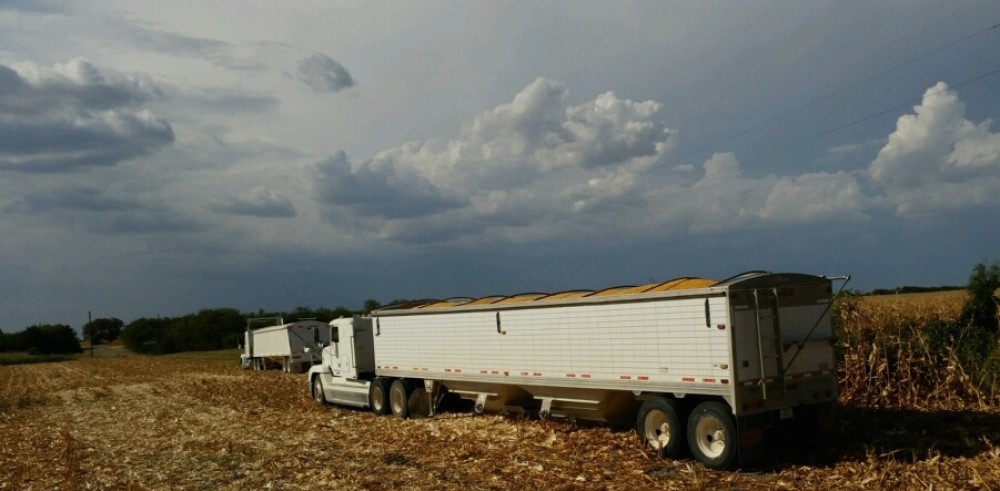The word “reprise” derives from a French word that means to take back, as in taxes owed on an estate (“Give that to me, right now!”), or to do over or repeat, as in the replaying of a musical interlude at a later place in the same work (“I remember that tune!”). In parts, this blog post is being taken back from last year and repeated here. It is a reprise. But, will it be of the same size and shape as it appeared last, will it be dressed in the same clothing, and why would a scary figure jump out and scare the audience on the night of Halloween?
The word “Halloween” is a form of “All Hallows’ Eve.” To “hallow” is an old English verb meaning to make holy or to “sanctify.” When used as a plural noun, “hallows” refers to all those who have passed from this life and are now holy persons or “saints” in the next world. So, All Hallows’ Day is All Saints’ Day, and the evening before that day is All Hallows’ Eve or Halloween.
If the saints are on All Saints’ Day, November 1st, who is on All Hallows’ Eve, October 31st, the night before the saints? Who is being reprised, taken back and repeated, and why do they jump out in the dark of the night and try to scare us?
All Saints’ Day was originally introduced in the year 609 AD by Pope Boniface IV. At that time, it was celebrated on May 13th. In 835 AD, Pope Gregory IV moved the feast day, the festival, to November 1st. This change in dates was apparently made so that All Saints’ Day would coincide with the Celtic festival of Samhain.
Samhain (which can be pronounced Sah–win or Sah-ween), November 1st, is one of the most important days in the Celtic calendar. Samhain is half-way between the autumnal equinox (the first day of our fall when the day and night are of equal length) and the winter solstice (the shortest day and longest night of winter). On Samhain, November 1st, the Celts of northern Europe celebrated the start of their New Year. Samhain marked the transition from the warm months of the sun to the cold months of the dark.
In ancient times in the Northern Hemisphere, the cold months were the sad months because without the heating systems of today, many of the elderly, the sick and the young could not survive the days of snow and ice. Sadly, they passed on. On Samhain, the cold time of year began, and the Celts remembered those who were no longer with them. As such, Samhain coincided well with All Saints’ Day. Both feasts remembered those who had passed to the next life.
In Celtic thought, October 31st, the night before their New Year, was a “thin time.” Those early people saw it as a night when the boundaries that surrounded the worlds of the living and the dead somehow mysteriously moved closer together, touched and thinned. In those thin places on that night, it was thought one might see and even move through to the other side, and those in the other place might do the same. Perhaps a part of this view was a wish to remember and see again loved ones now in that other land.
To prepare for the night, children were sent house-to-house to request wood and food for a party. This procession of children knocking on hut doors may be the origin of the trick-or-treating we find at our front doors. With the wood, bonfires were lit, brightening the night and inviting friends and family to gather round. In the light of the dancing flames, the food was passed and the treats shared. Neighbors laughed, feasted and enjoyed memories as they waited for the dawning of the New Year.
As the flames dwindled and the night darkened, the storytelling began. Stories were the movies of the early ones. On that night, remembering those passed from view into the next land, the picture show became spooky and scary. This was a night when strange things might happen and strange shapes appear. Suddenly, a costumed figure jumped out from the smoke, sounded an eerie and frightening SCReeEEECH, and sent everyone screaming and covering their eyes.
Now, that was a good story and a good effect.
Well, the next year folks arrived around the bonfire wearing their own costumes. Perhaps, they wanted to be part of the show. Maybe, they wore the costumes because it made the night feel friendly, safe and welcoming to be dressed like the actors that were going to scare them. Or, maybe, they were dressed like the ones they had lost, the ones they wished were there to share the New Year.
We’ll never know for sure when the trick-or-treating began and the costumes started. Mystery surrounds the night of All Hallows’ Eve. The eve of Samhain is a time when forms can and do appear different from who they might otherwise be. I think there will always be that which is not fully known or understood of this night.
One thing is clear and should be remembered: When you answer the door on Halloween and hear the children shouting “Trick or Treat,” act scared (Ohhhh, I’m shivering), compliment the costumes (My, you are a nice looking frog — I’ve never seen such a furry . . . tree?) and hand over the candy (Take all you want and see you next year).
Have a safe and fun All Hallows’ Eve.
And, be ready for a . . .
Reprise surprise.
Boo!
Grandpa Jim.
